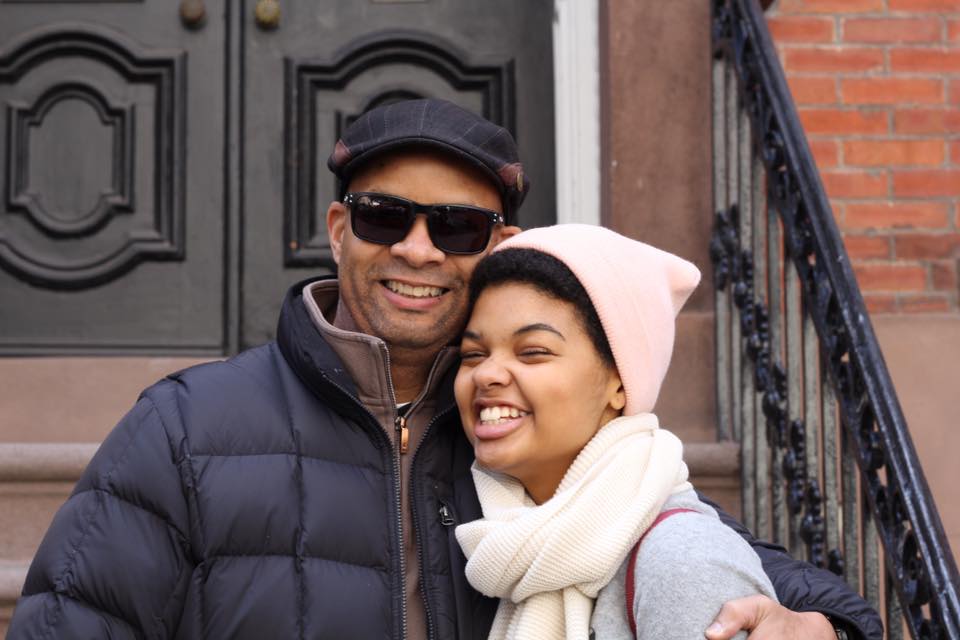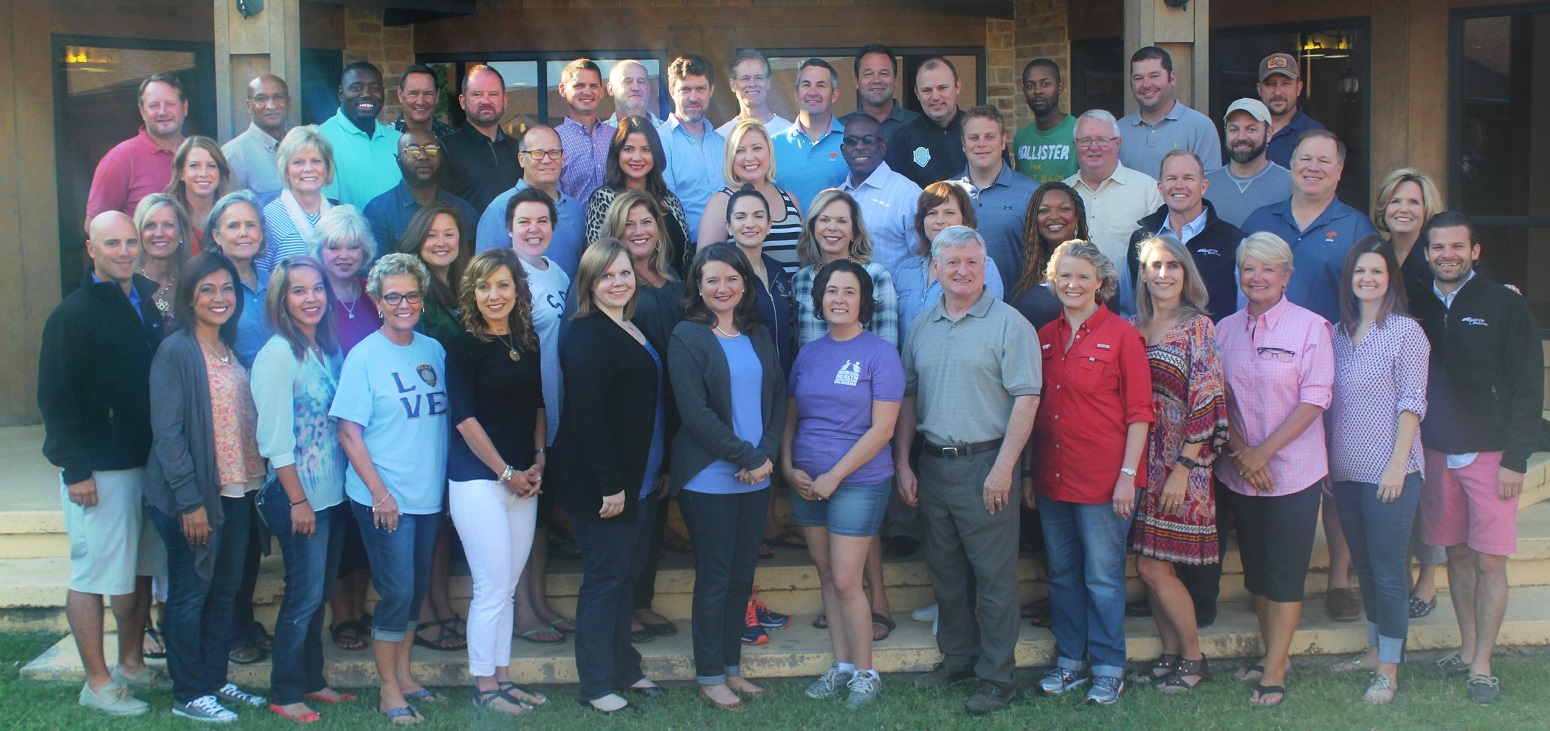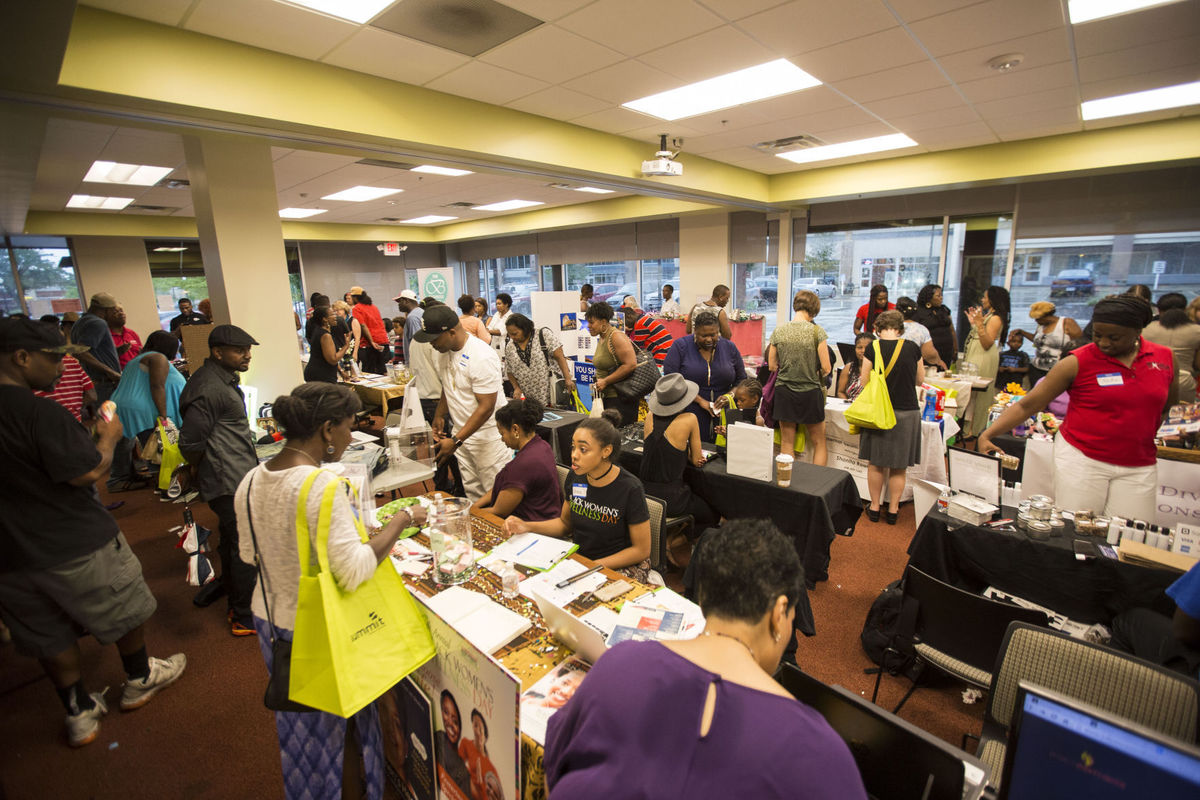
Follow this link to view Micah’s video presentation and to contribute to Polychrome
” Speak truth, Micah. They may not listen but they have to hear you. Speak.” Micah’s Father Michael Pegues

Micah pictured with her grandfather Julius Pegues photo credit Facebook
Multicolored. Multifaceted. Multidisciplinary. Polychrome Mag, like its definition, is an emerging indie publisher showcasing the work and lives of artists of color—across the entire spectrum. In an era where diversity has become a trend, a cynical marketing ploy, it is imperative brave new voices reclaim and broaden the narratives trapped in the margins of mainstream magazines.
Polychrome Mag was founded by nineteen year-old Micah Pegues. We had the pleasure of meeting Micah this past August, right before she entered her sophomore year at New York University. Although she has a face, voice, and demeanor that can make a grandmother blush, don’t let it fool you. Micah and child are antonyms. Pegues’s hustle can beat grown women with full-time jobs: as a matter of fact, she juggles her books and manages her dream team of six who are all spread across the country. She embodies the spirit and mindset of innovation, which requires a business savvy and foresight beyond her years.
To celebrate Polychome Mag’s ultra successful Kickstarter campaign for their inaugural issue, our Community Apprentice, Gabriella Mungalsingh interviewed Micah to talk about the magazine and the print industry. With three days to go, you can still join in early on the movement. Click here to visit their Kickstarter page and support.

G: Who or what did you use for inspiration while building Polychrome Mag? I know you were inspired as you ventured through Barnes and Nobles, but where did you get your other inspiration from?
M: I’ve always been artistically inclined, but I never knew where I wanted to focus my energy. As a magazine lover and a child of the Internet, the opportunity and idea presented itself and I grabbed hold. Something that stuck with me from my upbringing is this maxim my dad always tells me, “Don’t complain about something if you’re not going to doing anything about it.” I recontextualized this typically political sentiment and incorporated it into the framework of the magazine.
My friend Gabriela Yadegari had created a zine called Avant Girl, a zine for emerging movers and shakers. Seeing her go through the process of creating this zine during my first semester of college showed me that it was possible to have an idea, create something, and distribute it to a greater audience. She’s one of the most creative and incredible people I’ve ever met and with her help and previous experience I knew it’d be possible to make this magazine.
I was also heavily inspired by Tavi Gevinson, the creator of Rookie Mag. I’ve been following her and Rookie for years. She’s very vocal about the power of teenagers and youths. Watching her platform grow and become all that it is today has been a major influence not only for the creation but also for future models of the website.
G: Why have you chosen to do a print magazine instead of a digital ?
M: I chose a print magazine because I think it’s important to hold something in your hands. To be able to hold the magazine and know that it’s a manifestation of all your hard work is something I think all artist crave. In the coming months, I’m hoping to broaden the platform’s online reach. Initially, we had decided that print would come first to spark interest and later we’d work on pushing the website. I’m hoping to have a blog up and running with more frequent posts in the next year.
G: Since Polychrome Mag is a print magazine, what are your strategies for navigating an ever growing digital world and the use of social media?
M: Duality is key. We are trying to grow our online presence while keeping interest in the print magazine. We post on Instagram everyday and engage with the community that we’re building. Posting everyday helps us stay in people’s feeds and consciousness. It also establishes that we are consistent, active, and willing to take a look at your work.
G: What do you look for when selecting artists to be featured in Polychrome Mag?
M: When looking for creators for Polychrome I look for originality, enthusiasm, and sincerity. I think it’s important to be confident in the originality and individualized nature of work you make. It takes a certain amount of gumption to submit your work to a magazine, even if it’s a small one like Polychrome. Enthusiasm is also important to me! I get excited when a creator submits something that they’re excited about. Enthusiasm about the magazine too is an indicator for me, about who I want to collaborate with. Lastly, sincerity. Every once in a while I get an email that says, “Oh I’ve been a fan of you for a long time and love the magazine.” We’ve only been around for a year and we’ve yet to release our first issue, so the lack of genuineness is apparent. I love seeing people challenging and complicating new and traditional mediums.
G: As a young millennial of color, do you believe you may face barriers while building Polychrome Mag?
M: I’m actually post-millennial! “Generation Z” typically starts around 1995. I was born in ’97. I think this is something that people are starting to recognize. In my opinion, being a part of this cohort actually gives me an advantage. Polychrome’s demographic is mostly 18-24 year olds. We’re global, Internet/technologically savvy, and craving representational media that reflects who we are and what we actually care about. We grew up in age of the Internet. Most of us can’t even remember a time without computers in our lives. We matured and adapted to the burgeoning social media world as soon as it popped up.
We understand marketing and social media because as children and teens we’re largely targeted because we represent billions in buying power. Because of the consumerist nature of or world, we are competent enough to realize how and when we’re being targeted. All of this is an advantage in my book. I feel like being a PoC in this age is a unique position. The idea of a double consciousness really applies to all PoC. We are cognizant of the white gaze and are able to operate in multiple worlds. Our everyday world requires strategizing and a deep understanding of how the world works around us. I feel like older corporations and publications are just now taking note but they’re lagging. We adapt quickly and know what we have to fight against.
G: What suggestions would you give to other magazines on including people of color in the narrative? It is more than just having a seat at the table.
M: I really don’t know why it’s so hard. If you are “integrating” PoC, don’t tokenize us and let us have a voice where decisions are made. I learned this from Anisa Tavangar. A lot of these more traditional publications put up a front of diversity, but behind closed doors they’re not really that progressive and inclusive. Elaine Welteroth is a major inspiration of mine. Look at the incredible job she did during her short time at Condé Nast, refocusing Teen Vogue as editor-in-chief. She did all these things: diversifying Teen Vogue, bringing in more voices, and challenging the narrative.












